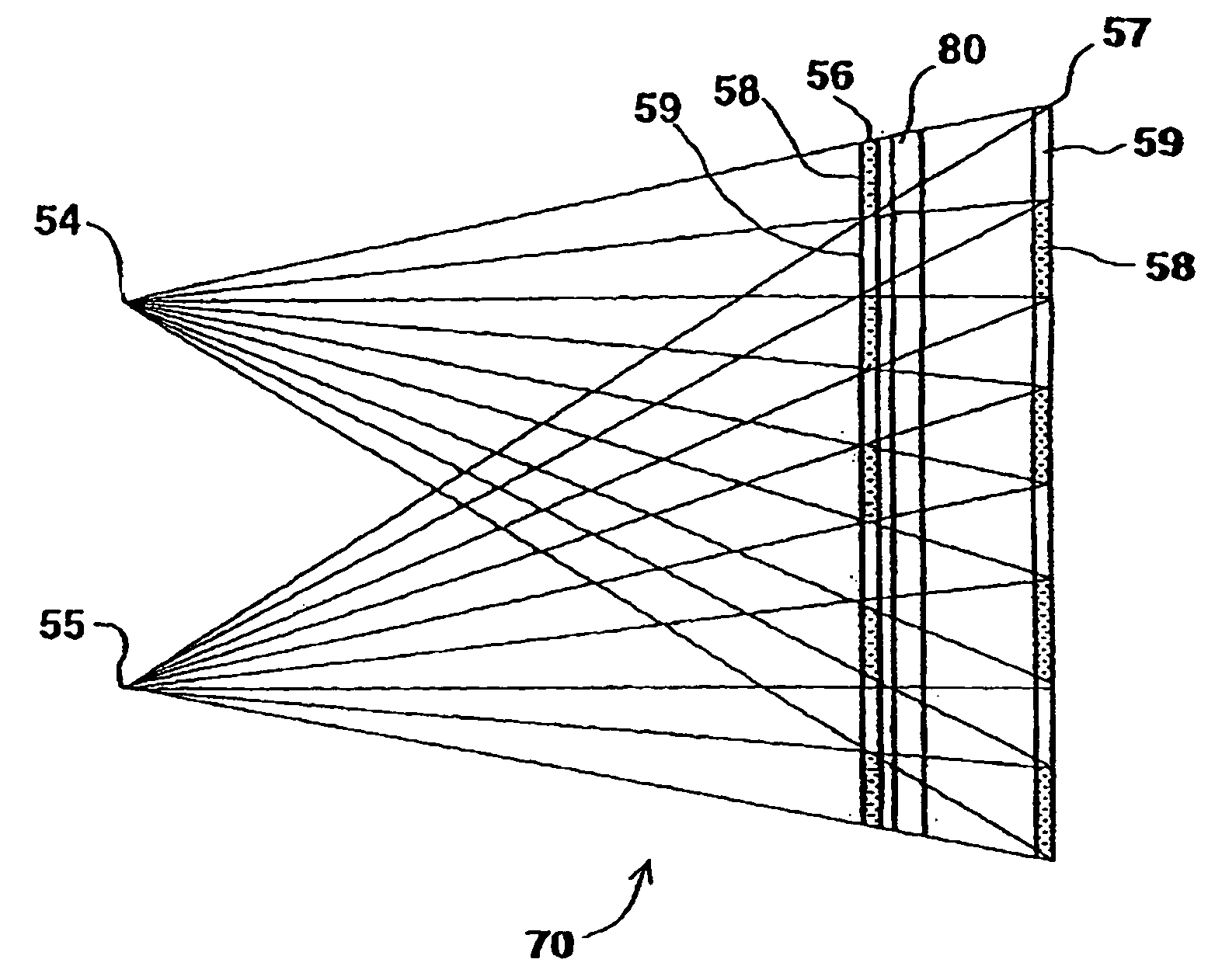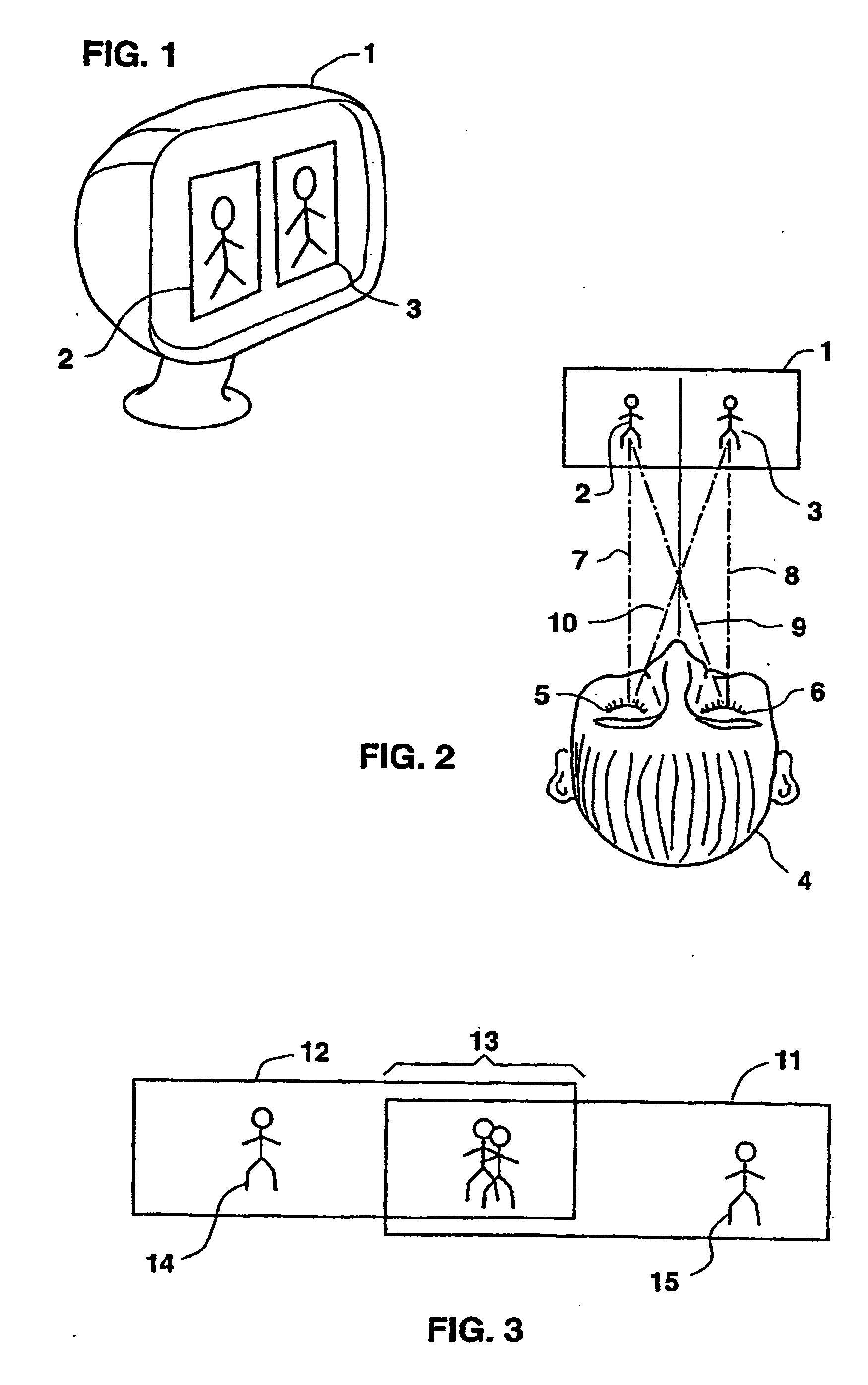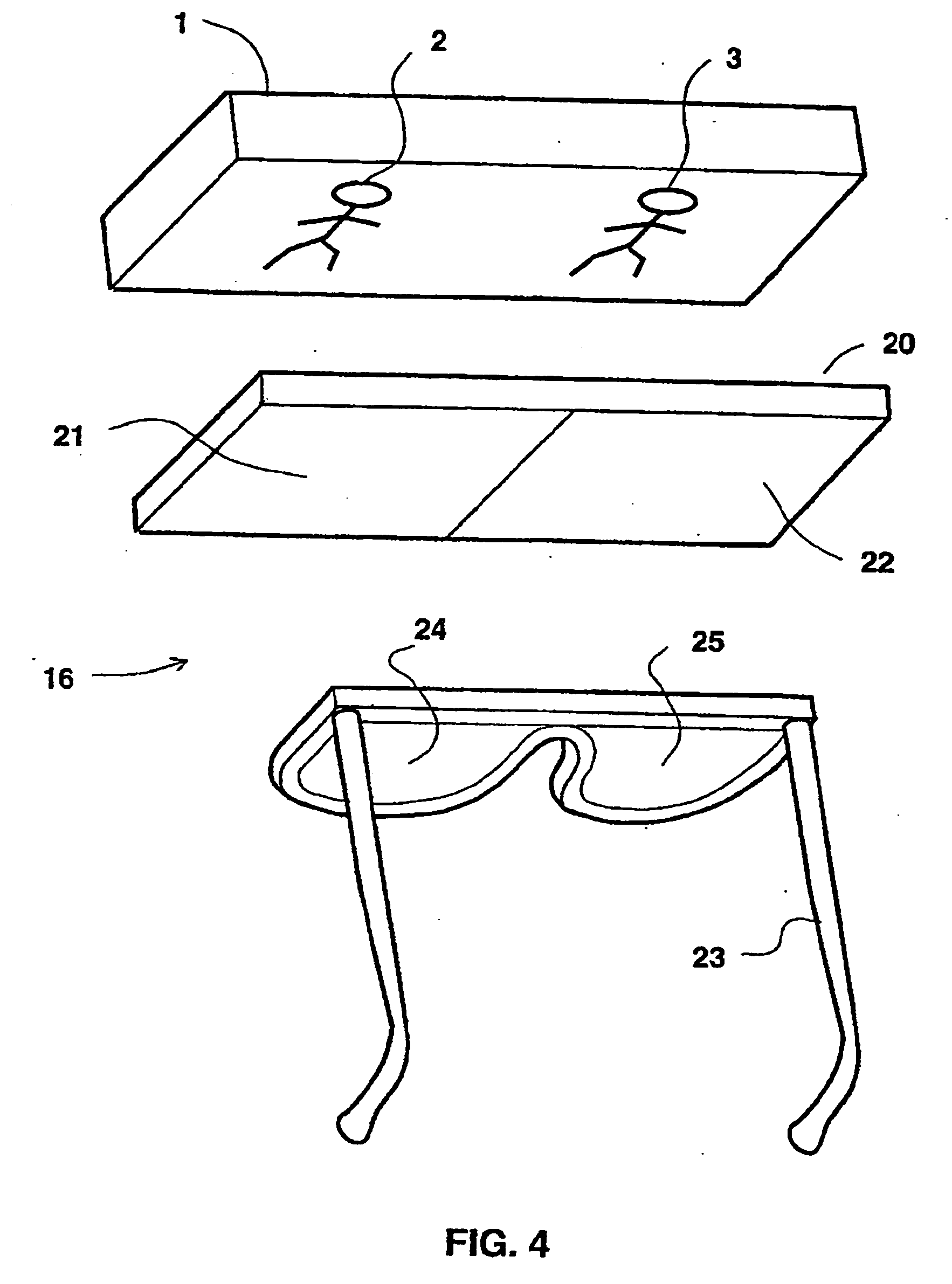Systems for three-dimensional viewing and projection
a three-dimensional and projection technology, applied in the field of three-dimensional projection systems, can solve the problems of poor adaptability of lenticular systems to viewing systems such as computer displays and televisions, poor quality of lenticular systems, and inconvenient use of viewing apparatuses
- Summary
- Abstract
- Description
- Claims
- Application Information
AI Technical Summary
Benefits of technology
Problems solved by technology
Method used
Image
Examples
first embodiment
[0153] The method of viewing a 3D-image according to the present invention is illustrated in FIG. 2.
[0154] First, FIG. 2 shall be used to review the way a viewer 4 normally looks at an object. Viewer 4, when looking at an ordinary object, for example left image 2, in an ordinary manner, directs both his left eye 5 and his right eye 6 to image 2, resulting in line of sight 7 for left eye 5 and line of sight 9 for right eye 6. Similarly, when viewer 4 normally looks at image 3 the viewer directs both eyes 5 and 6 to that object, invoking lines of sight 10 for left eye 5 and 8 for right eye 6.
[0155] If image 2 is a left image as defined, and image 3 a right image, then a stereoscopic binocular (i.e., three-dimensional) view can be obtained by viewer 4 who diverges his eyes in such a way that left eye 5 is directed towards left image 2, resulting in line-of-sight 7, while at the same time right eye 6 is directed towards right image 3 resulting in line-of-sight 8.
[0156] Left 2 and righ...
second embodiment
[0168] With reference now to FIG. 4, presented is the present invention, aimed at solving the problem of flanking (i.e., peripheral) images as described above. FIG. 4 shows a system 16 for three-dimensional viewing. System 16 includes a layer 20, layer 20 includes light polarizing means and is divided into a first area 21 and a second area 22, area 21 substantially covering left image 2, whereas area 22 substantially covering right image 3, both images displayed on display 1. It should be noted that in intent, layer 20 is close to display 1, yet it has been moved disproportionally far away in the drawing for clarity in showing the placement of images on display 1. Area 21 polarizes light in a first orientation, whereas area 22 polarizes light in a second orientation, which is substantially perpendicular to the first. The viewer then wears polarizing eyeglasses 23 whose left eyepiece 24 allows only light polarized in the first orientation to enter the left eye, and whose right eyepie...
third embodiment
[0172] With reference now to FIG. 5, presented is the present invention. According to the third embodiment provided is another system 35 for three-dimensional viewing, system 35 enables to use images which are not limited in width, and which do not require special divergence or convergence of the eyes for them to be three-dimensionally viewed.
[0173] As mentioned above, U.S. Pat. No. 5,050,961 to Venolia discloses a system which supplies appropriate subregions of left and right images to the appropriate eyes, yet leaves 50% of the display area unseen by each of the eyes, thus affecting the quality (i.e., resolution) of the perceived 3D-image. On the other extreme, U.S. Pat. No. 5,083,851 to MacDonald provides means for using all image information of the display area for both left and right images, yet MacDonald means is relatively expensive and complex compared to the system 35 presented in FIG. 5 and described hereinbelow.
[0174] System 35 includes a display 1, a light polarizing la...
PUM
 Login to View More
Login to View More Abstract
Description
Claims
Application Information
 Login to View More
Login to View More - R&D
- Intellectual Property
- Life Sciences
- Materials
- Tech Scout
- Unparalleled Data Quality
- Higher Quality Content
- 60% Fewer Hallucinations
Browse by: Latest US Patents, China's latest patents, Technical Efficacy Thesaurus, Application Domain, Technology Topic, Popular Technical Reports.
© 2025 PatSnap. All rights reserved.Legal|Privacy policy|Modern Slavery Act Transparency Statement|Sitemap|About US| Contact US: help@patsnap.com



